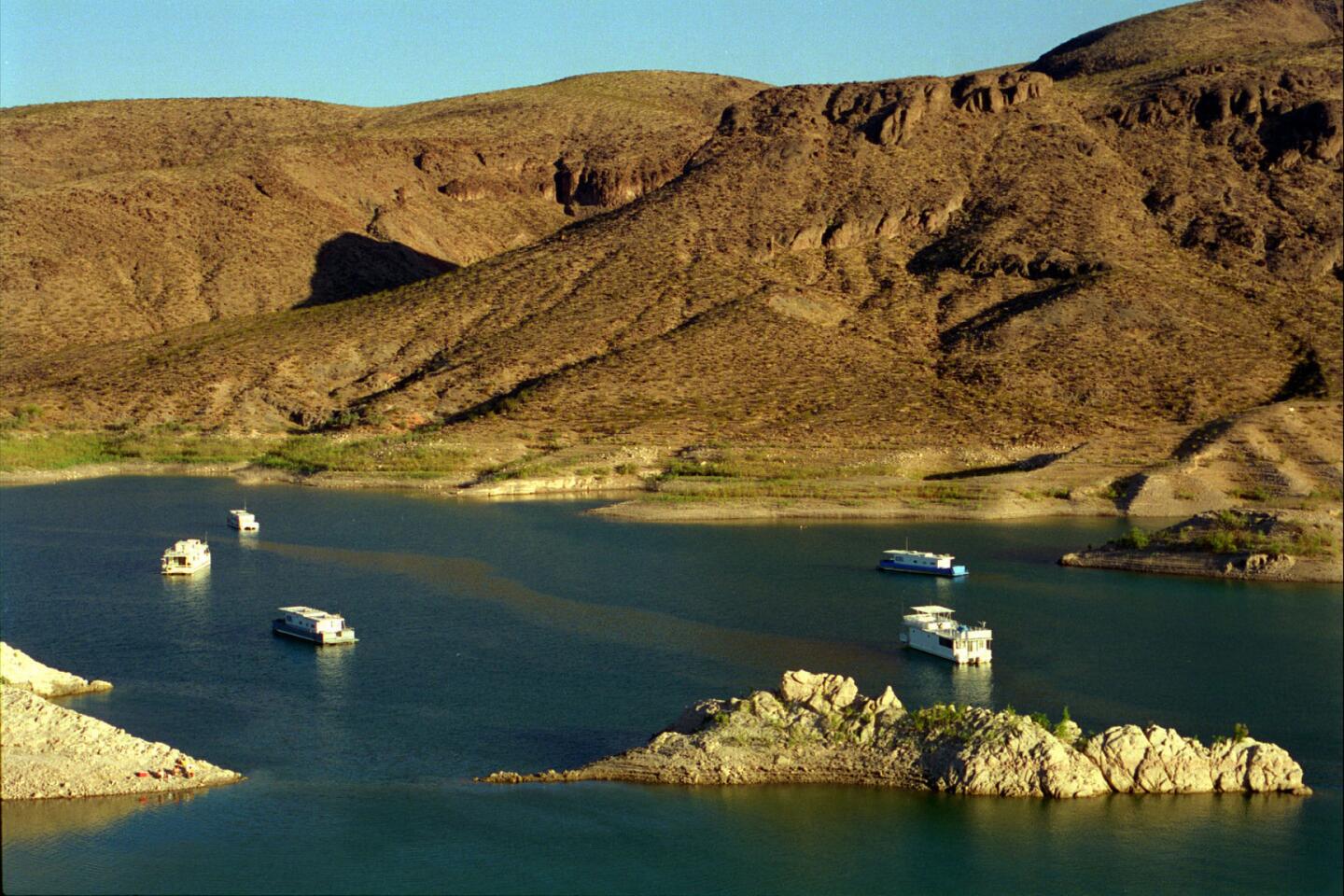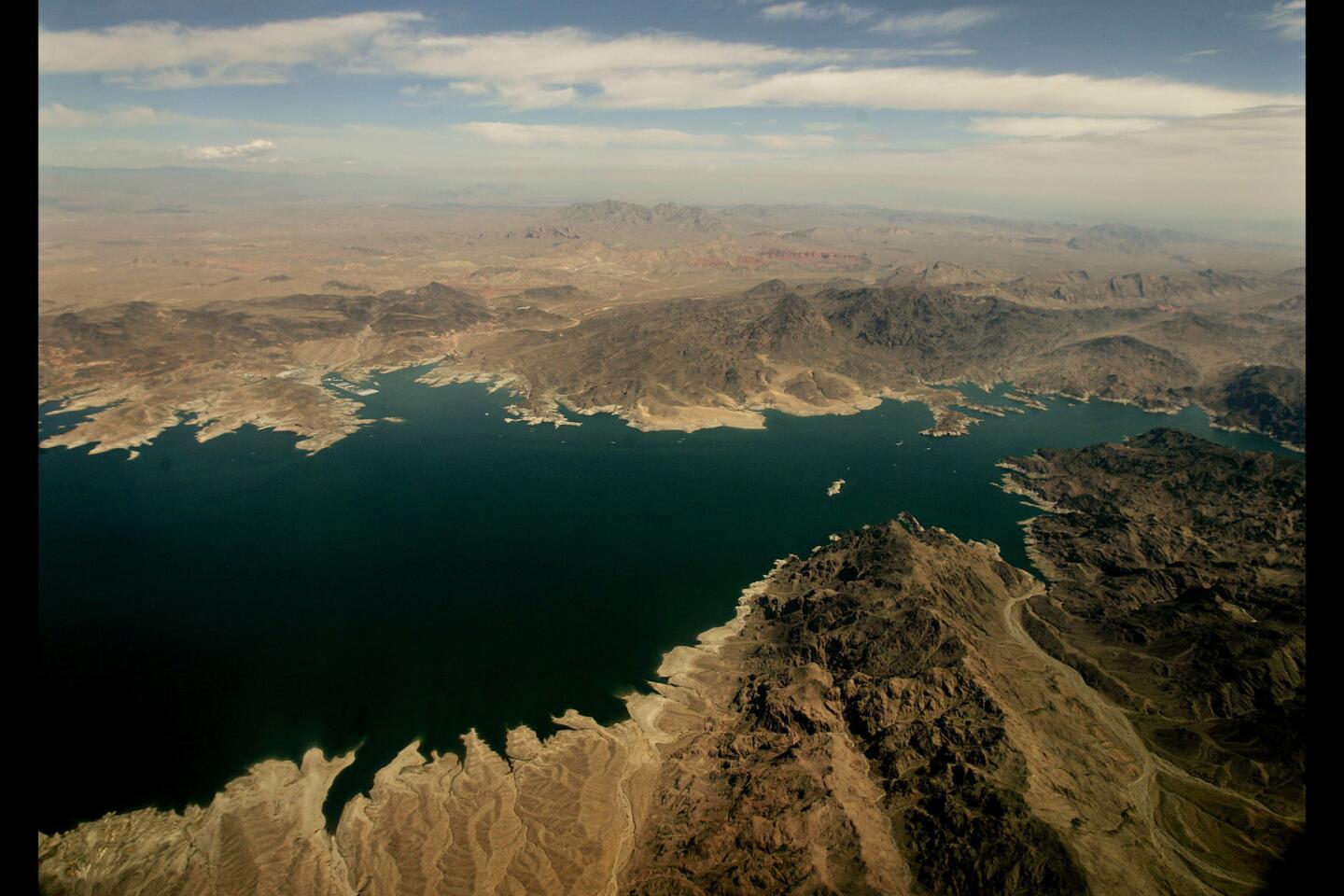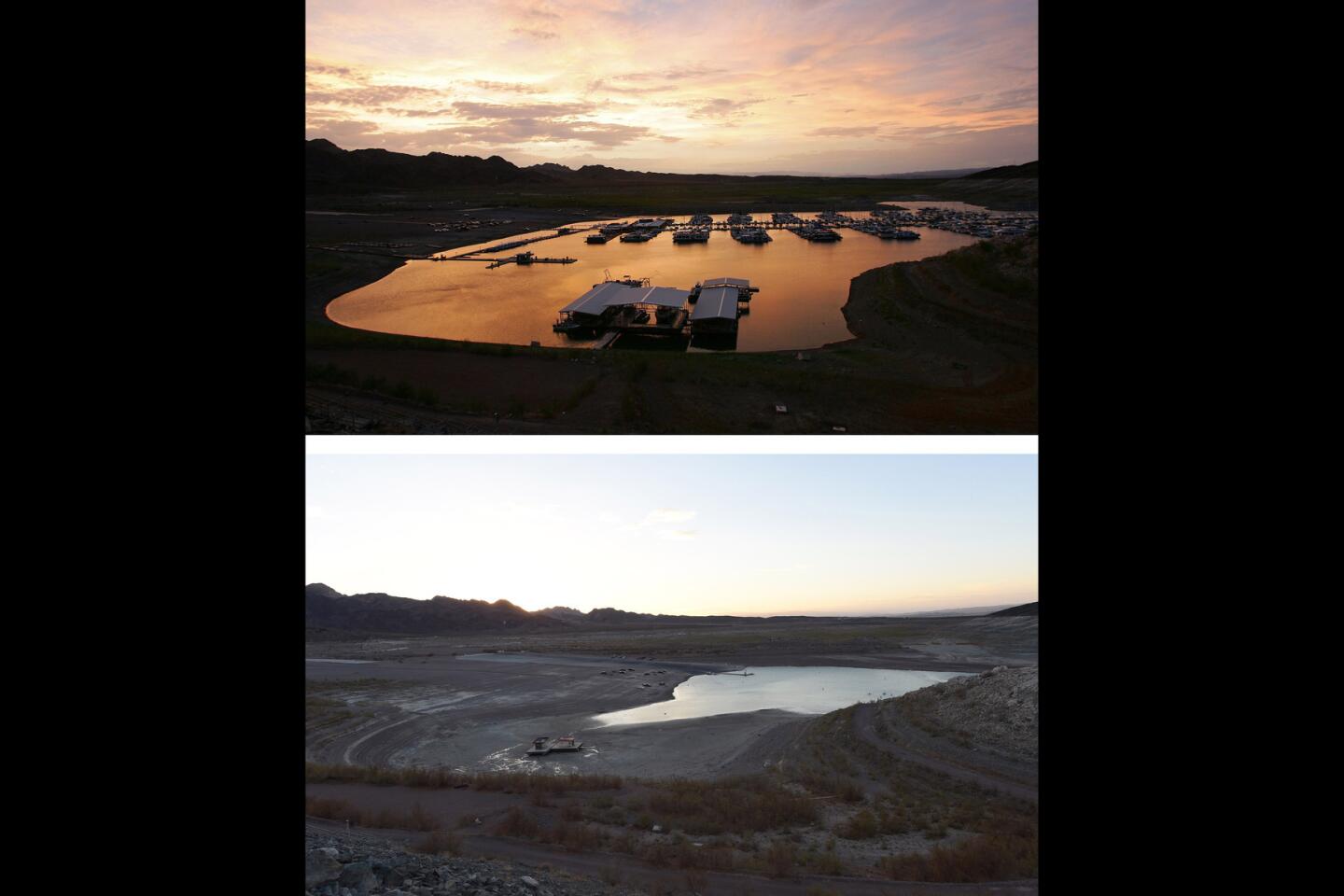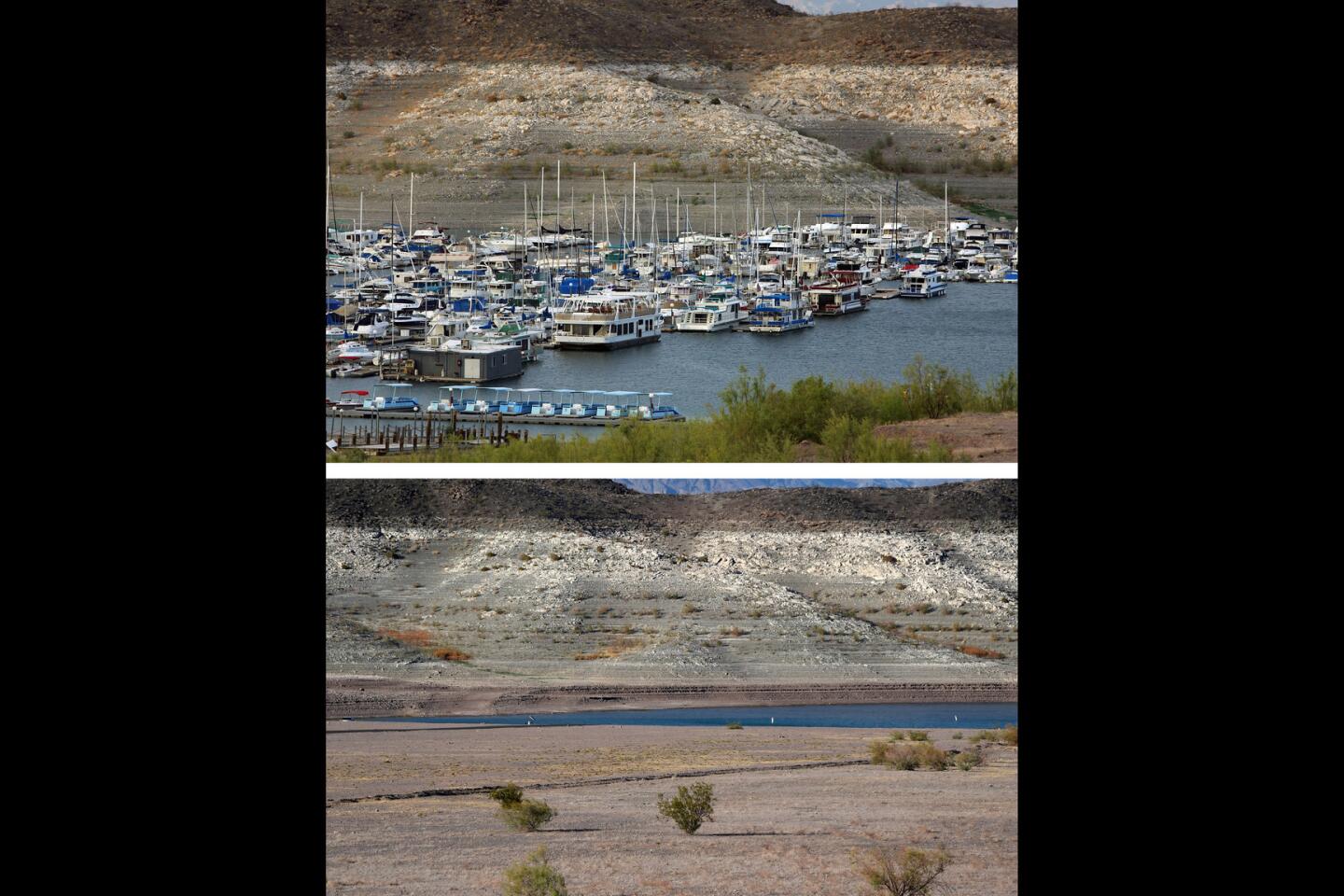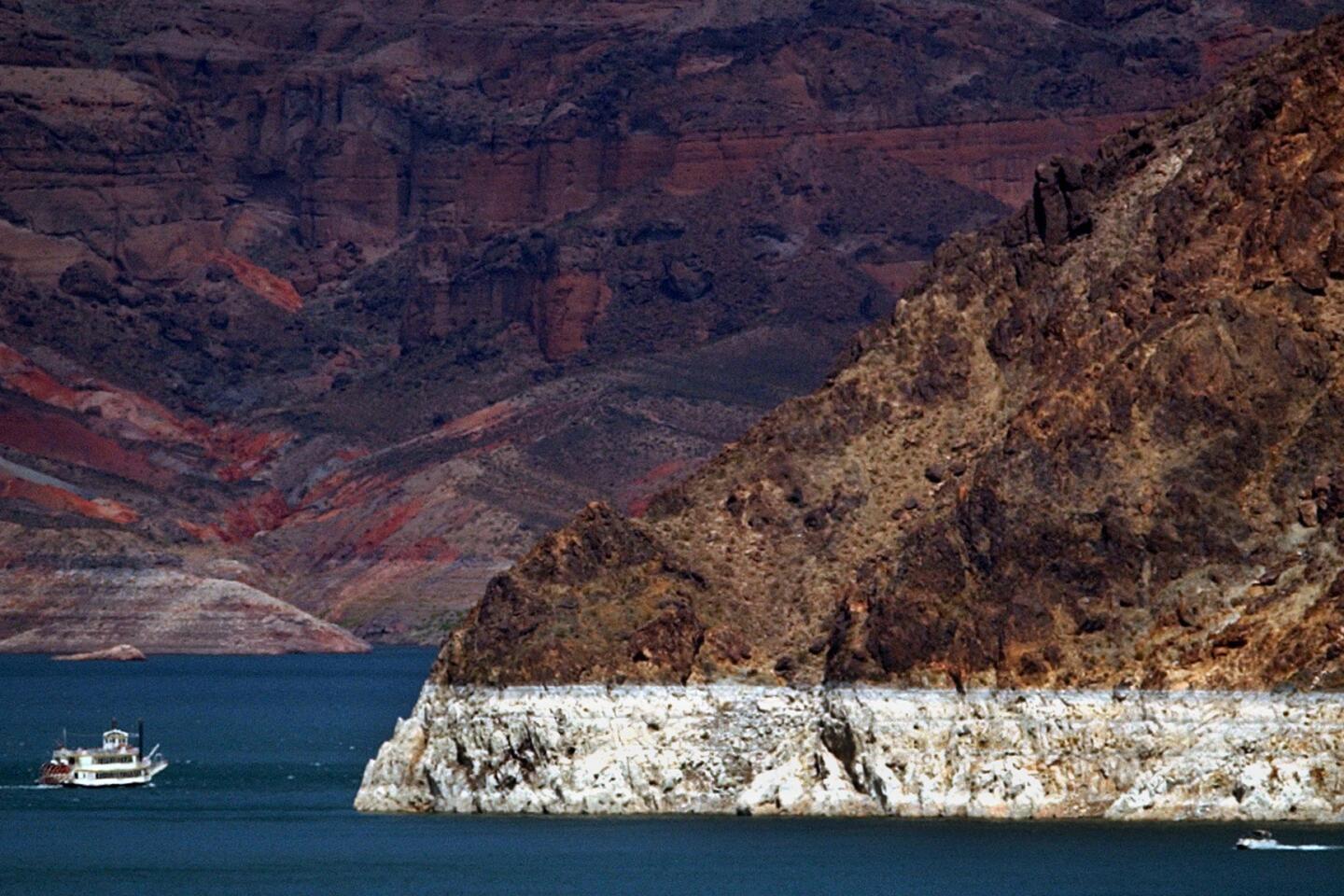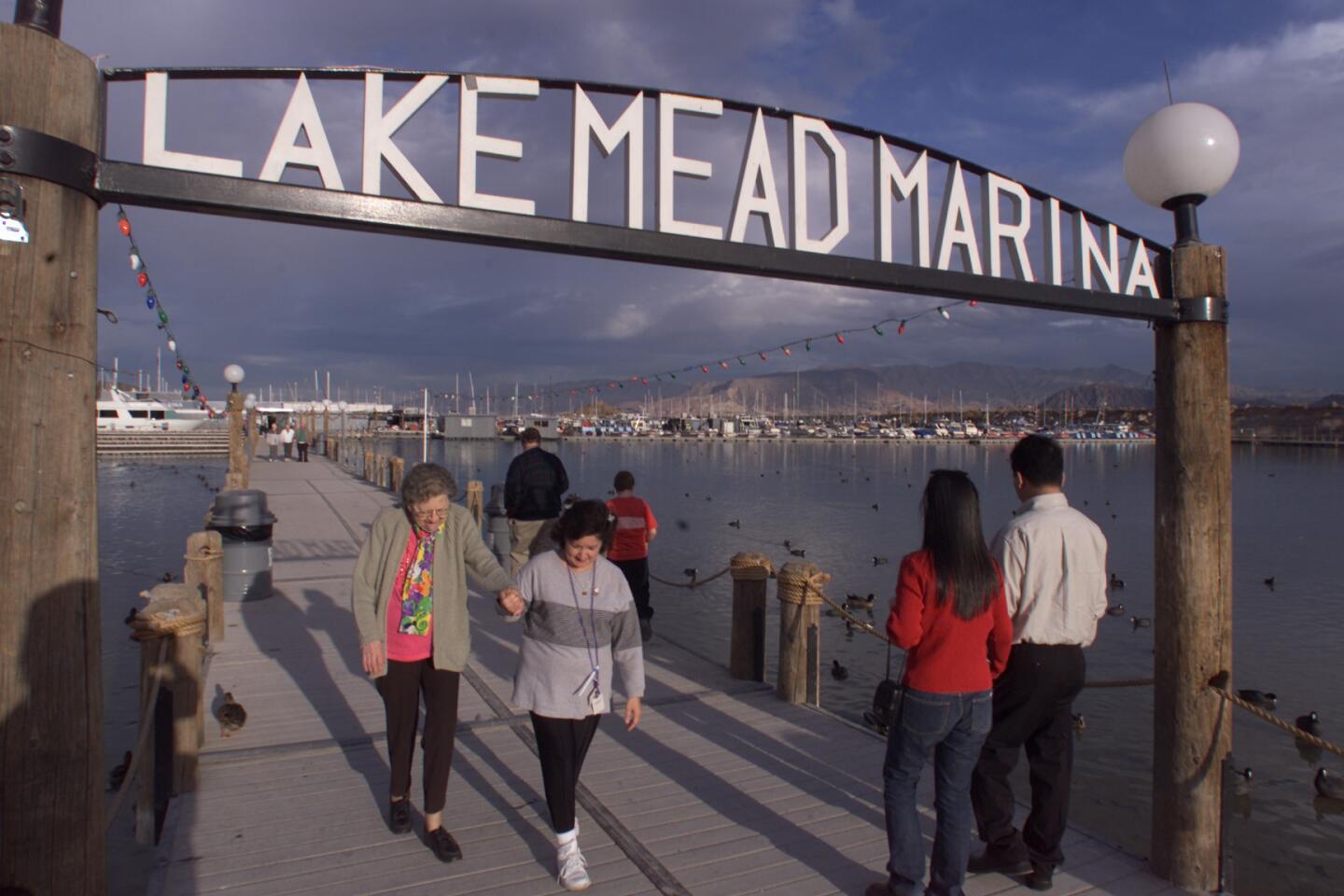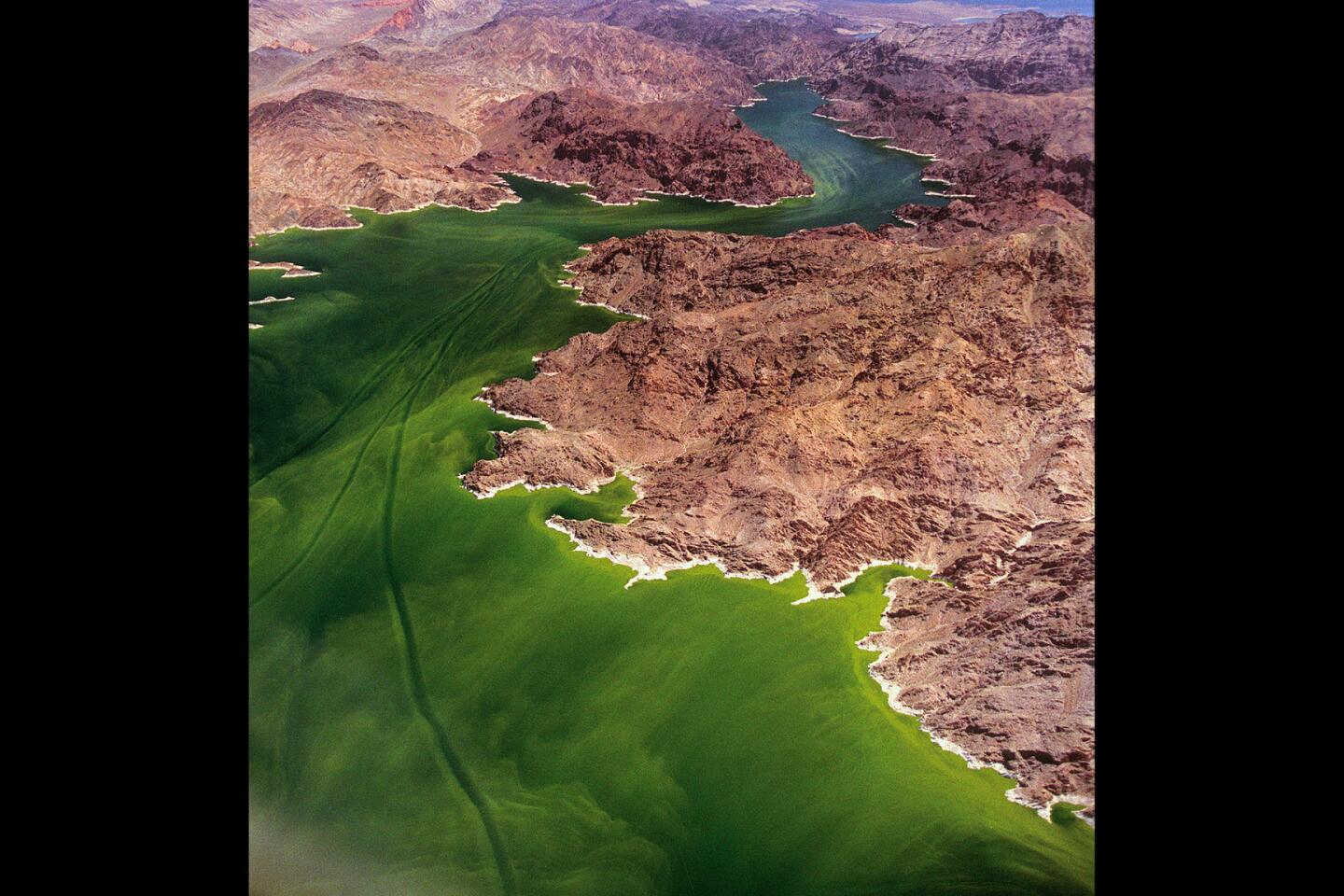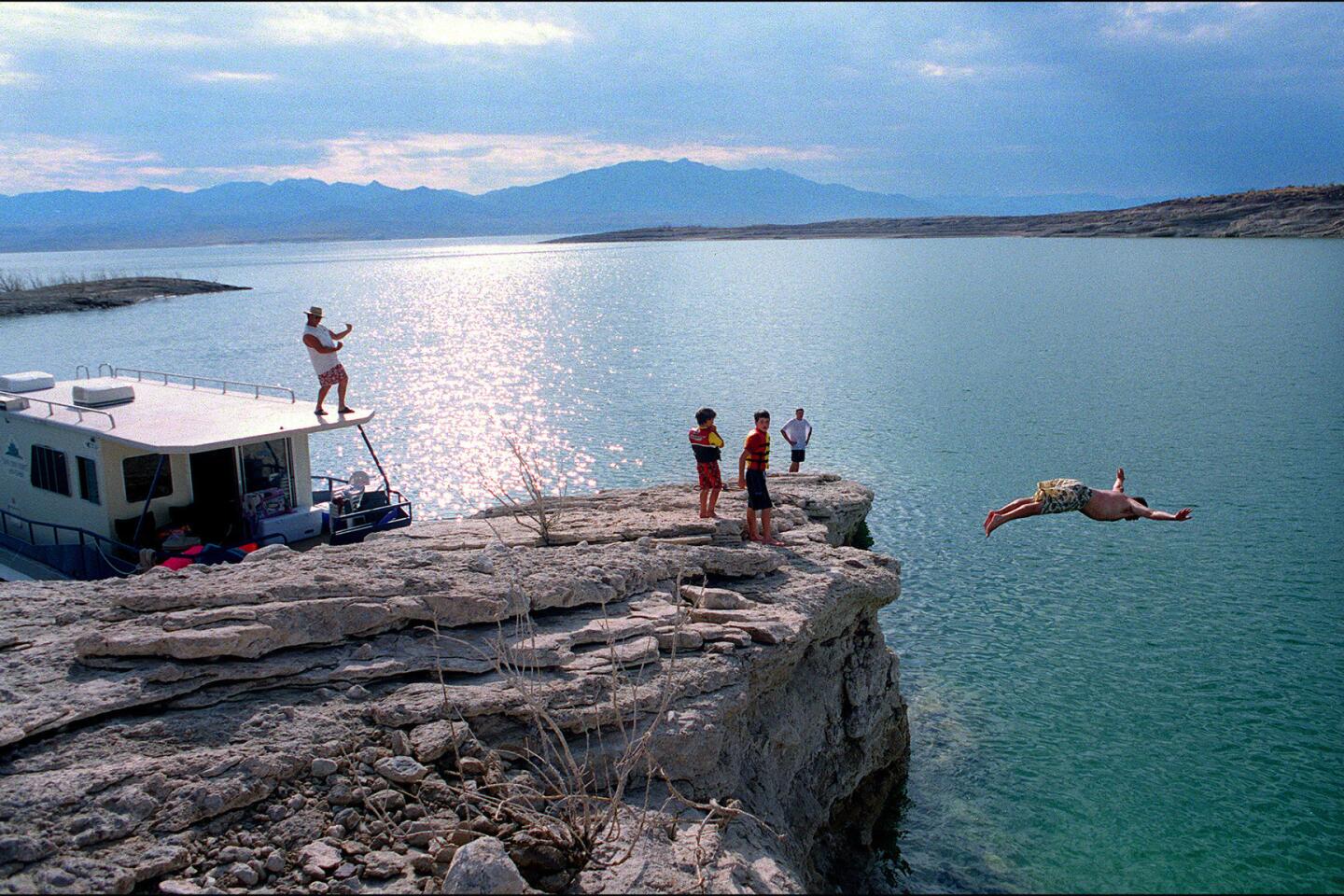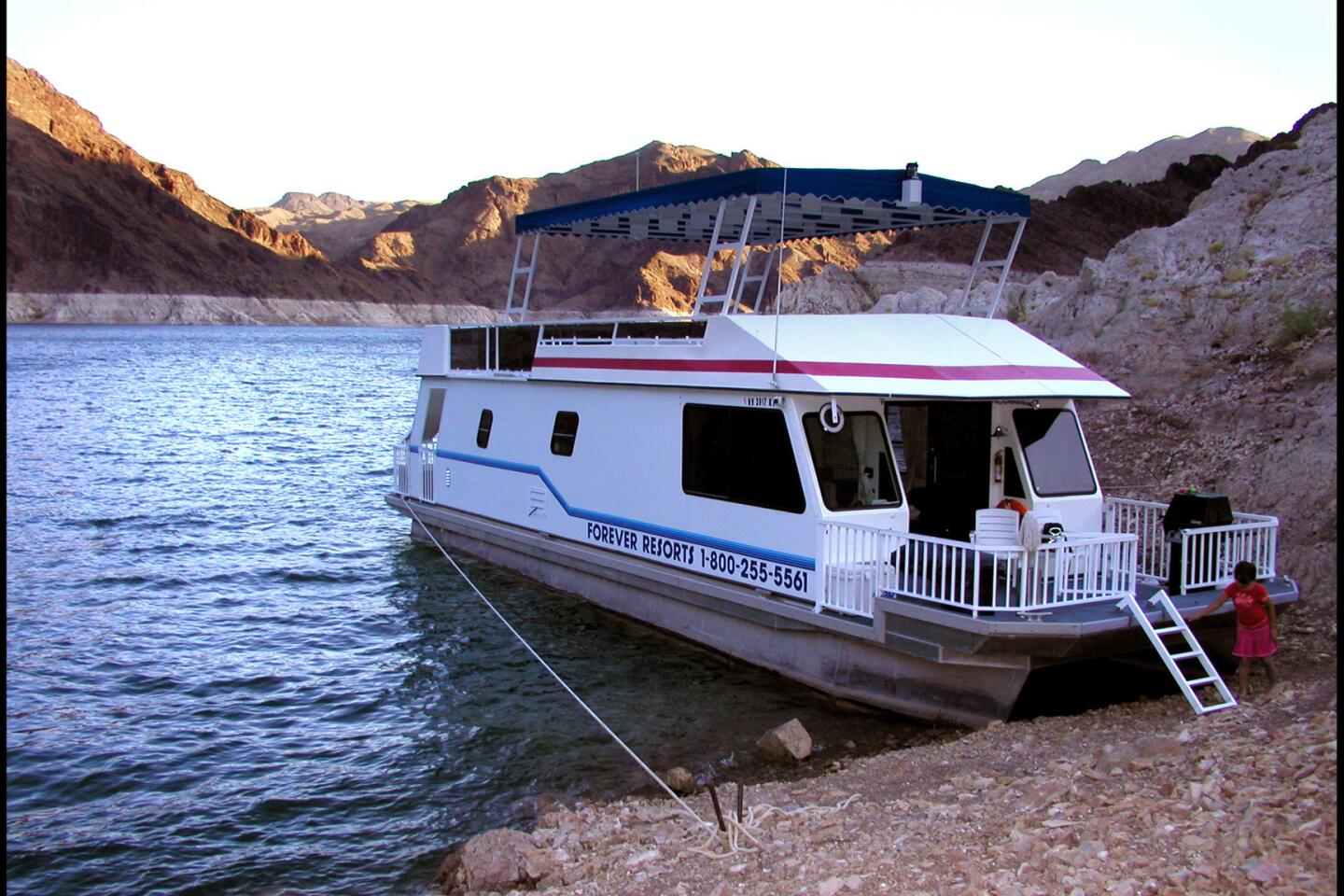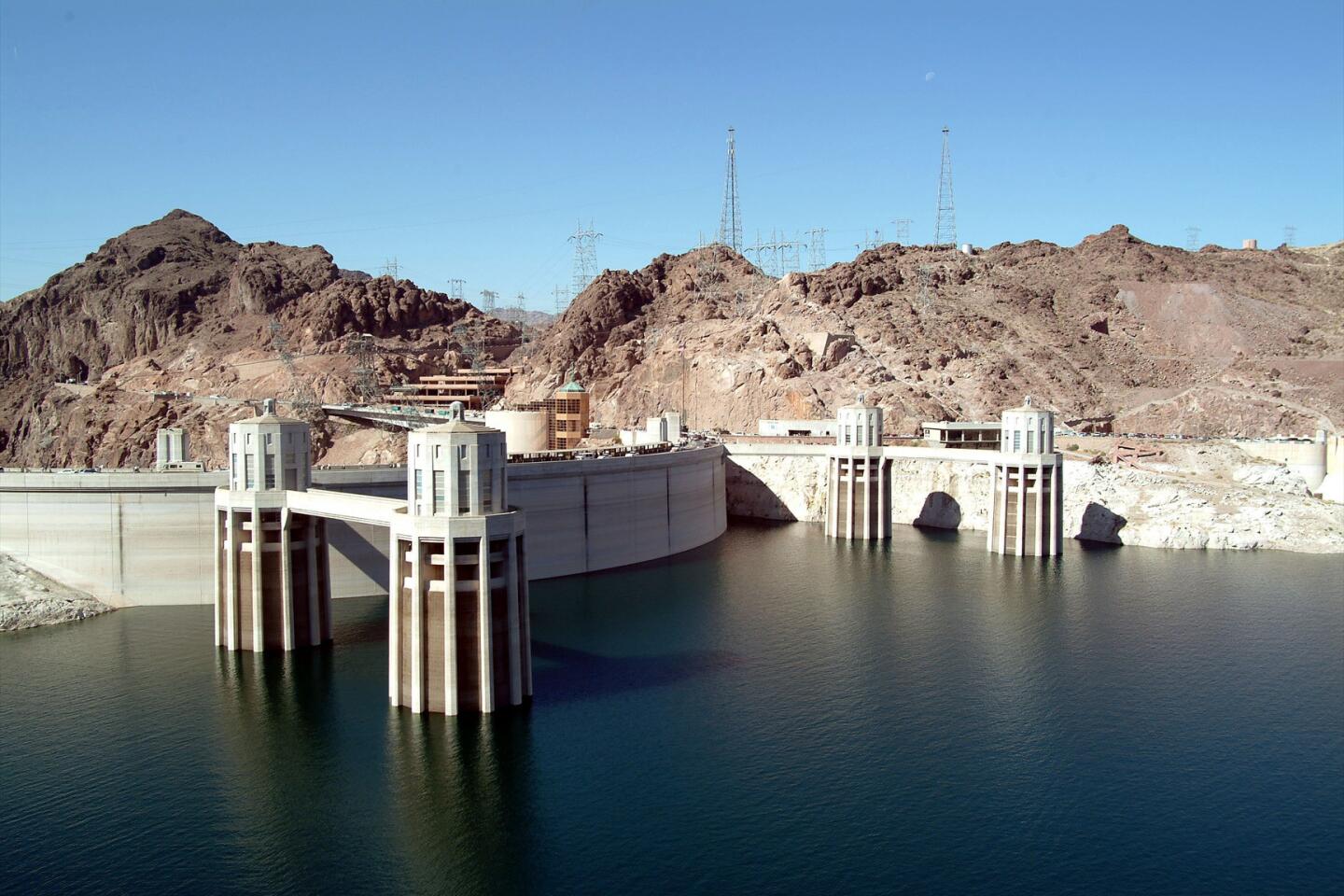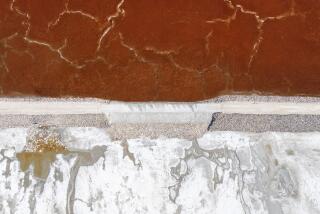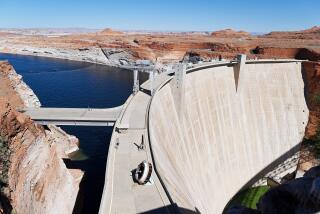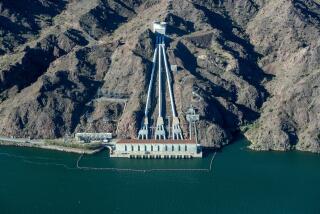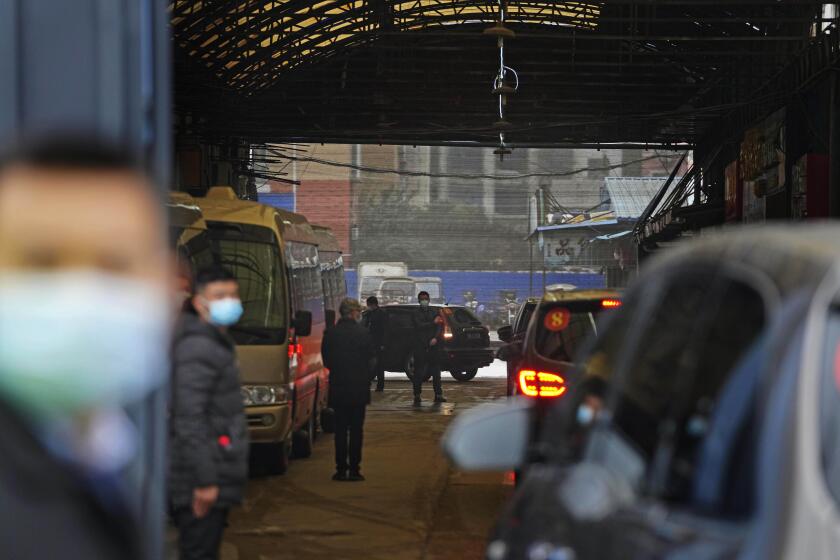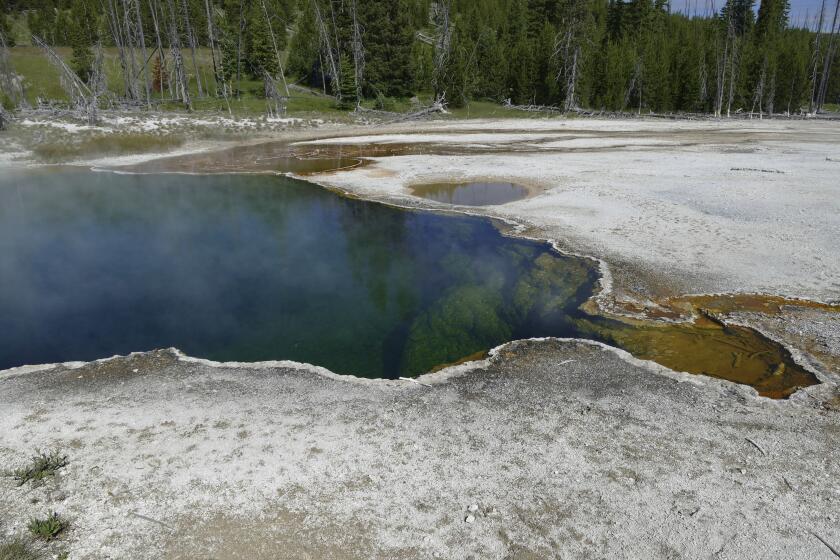Lake Mead water level falls to a landmark low, and is likely to get worse
For Western states enduring a debilitating drought, the news is bone-dry bad: Anemic Lake Mead has hit a historic low level.
The surface of the sprawling reservoir outside Las Vegas late Tuesday afternoon fell to 1,079.76 feet above sea level — nearly 140 feet below capacity — as the prolonged drought continues to evaporate the beleaguered Colorado River system.
Mead’s chalky white shoreline is advancing as the waters quickly recede.
For California, Arizona and Nevada, which draw water from Mead, a grim situation is about to get worse: Officials estimate that Mead will drop to the unprecedented low elevation of 1,073 feet as the hottest summer months bear down, with less snowpack in the Rocky Mountains to recharge the Colorado River.
“We’re only at 38% full. Lake Mead hasn’t been this low since we were filling it in the 1930s,” said Rose Davis, a spokeswoman for the U.S. Bureau of Reclamation in Las Vegas. “All the way around, this is bad news. There’s not much good to say about 15 years of drought, no matter how you look at it.”
Lake Mead, which meanders miles into the parched Nevada desert, held back by the Hoover Dam, is drawing closer to the 1,075-foot level, below which officials would declare a water emergency and begin rationing water allotments to Nevada and Arizona.
The more the water level drops, the greater the chances that Hoover Dam’s hydroelectric output might be seriously affected, federal officials say. Federal forecasters originally predicted that the Colorado River would flow at 71% capacity this summer, but they now say the figure could fall to 50% or lower.
In recent weeks, Gov. Jerry Brown has mandated a series of water-saving measures to reduce urban water use by 25%. Officials say the new low levels at Lake Mead are not surprising but still painfully noted.
“Things like this don’t surprise anyone — that’s why mandatory cutbacks have been ordered in California,” said Richard Stapler, a spokesman for the state’s Natural Resources Agency. “This is something we pay very, very close attention to.”
The Colorado River provides water for 40 million people across the Southwest and parts of Mexico — the majority of them in U.S. cities such as Los Angeles, San Diego, Phoenix and Las Vegas. But as populations continue to climb — Las Vegas’ population of 2 million is expected to double by 2060 — water experts say consumers need to take drastic measures or the water will one day run out.
“The death of Lake Mead should be a wake-up call to people across the West that we need to boldly address this drought,” said Howard Watts, a spokesman for the Great Basin Water Network, a nonprofit group composed of environmentalists, ranchers and Native Americans that seeks to preserve the health of the Colorado River system.
“We’ve been slow to act, slow to react. Nobody knows when this drought is going to end. We need to become far more aggressive in areas of conservation to protect lake levels from falling even lower.”
Environmentalists call for such no-nonsense steps as slashing indoor as well as outdoor water use, charging more for water and punishing abusers with precipitously higher rates, and disclosing house-by-house water use in residential bills to create more social pressure to conserve.
“We do have to eat, so we’re not opposed to using water for agriculture,” Watts said. “But everybody is going to have to make shared sacrifices, even making shifts in what’s being grown by the Southwest’s farmers.”
Lake Mead hit its previous low in August, at 1,080.19 feet, officials said.
Las Vegas has long been at a disadvantage when it comes to Lake Mead water. A 1922 Colorado River water-sharing agreement among seven Western states — one still in effect nearly a century later — gives southern Nevada the smallest amount of all; 300,000 acre-feet a year, compared with California’s 4.4 million annual acre-feet. An acre-foot can supply two average homes for one year.
This summer, officials will make their projection for Lake Mead water in January 2016. If the estimate is below 1,075 feet, rationing kicks in: Southern Nevada would lose 13,000 acre-feet per year and Arizona would lose 320,000 acre-feet. California’s portion would not be affected.
U.S. Bureau of Reclamation officials say there is a 21% chance of Lake Mead plunging below 1,075 feet next January. The odds increase to 54% for 2017.
“This situation reaffirms the seriousness of this drought. This isn’t a new drought — it’s been going on for 15 years,” said Bronson Mack, a spokesman for the Southern Nevada Water Authority, an umbrella organization comprising seven water agencies. “We have seen this situation coming for some time, and it requires an immediate response from southern Nevada, from everybody.”
Meanwhile, Lake Mead now resembles a mammoth desert mud puddle evaporating after a hard summer’s rain.
The lake is ebbing as though a plug has been pulled from a bathtub drain; its shoreline forming a soap ring around its edges, a ring that will only grow in the dry summer months. The water is already so low that boat launch ramps need to be extended to reach the water.
“It’s a surreal landscape out there,” Davis said.
Twitter: @jglionna
More to Read
Sign up for Essential California
The most important California stories and recommendations in your inbox every morning.
You may occasionally receive promotional content from the Los Angeles Times.
